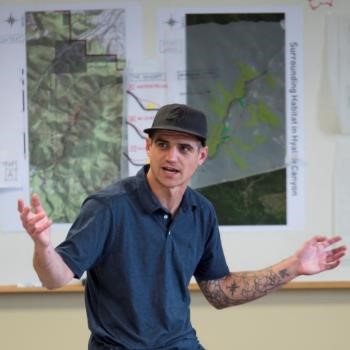
WTI Researchers are collaborating on a research project to develop, implement and evaluate a wildlife crossing structure made of Fiber-reinforced polymers (FRPs), a strong but lightweight composite material that could significantly reduce the construction and maintenance costs of wildlife overpasses and associated infrastructure elements. In recent project news, an FRP wildlife crossing will be designed for a location on US Highway 97 in Siskiyou County, California – the first of its kind on this continent.
The project has evolved out of several research collaborations at WTI. In May 2018, WTI and its partners, Ryerson University in Toronto, Canada, and ARC (Animal Road Crossing) Solutions hosted a design collaboration laboratory (Co-lab) on FRP-based wildlife crossing structures. The Co-lab engaged experts in engineering, landscape architecture, and ecology from across North America and set the stage for further exploration of FRP material use in wildlife crossing infrastructure.
Also, in 2019 WTI was selected to lead a team of researchers for a Transportation Pooled Fund Study (PFS) administered by the Nevada Department of Transportation and co-sponsored by the State Departments of Transportation of AK, AZ, CA, IA, MN, NM, OR, and WA, as well as Ontario’s Ministry of Transportation and Parks Canada Agency. The FRP structural design, implementation and evaluation will be conducted as part of the Pooled Fund Study. Marcel Huijser is the PI for the overall Transportation Pool Fund Study, which will identify a range of cost-effective solutions to reduce wildlife-vehicle collisions. Matthew Bell, Damon Fick and Rob Ament are leading the FRP design project component; Mat had the opportunity to present a poster on FRP research at the TRB Annual Meeting in Washington, DC in January 2020.
